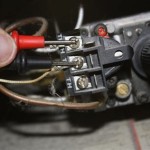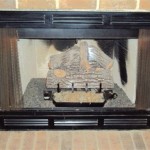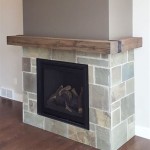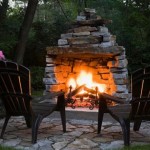Wood Burning Fireplace Stove Insert: Optimizing Heat and Efficiency
A wood burning fireplace stove insert represents a significant upgrade to a traditional open fireplace. It functions as a self-contained heating appliance that is installed within an existing fireplace opening. Primarily, these inserts offer enhanced heating efficiency, reduced emissions, and improved safety compared to open fireplaces. This technology leverages the inherent heat generated by burning wood while mitigating the drawbacks associated with traditional open hearths.
Traditional fireplaces, while aesthetically pleasing, are notoriously inefficient. A substantial amount of heat escapes up the chimney, leading to significant energy loss and increased heating costs. Wood burning fireplace stove inserts address these inefficiencies by creating a sealed combustion chamber and employing advanced technologies to extract more heat from the wood fuel before being exhausted. This results in improved heating performance and reduced wood consumption.
The functional components of a wood burning fireplace stove insert typically consist of a firebox, a door with a glass window, an air intake system, a flue collar, and a blower fan. The firebox is the enclosed chamber where the wood is burned. The airtight door allows for controlled combustion and prevents smoke from entering the living space. The air intake system provides the necessary oxygen for combustion, often with adjustable controls to regulate the burn rate. The flue collar connects the insert to the existing chimney, facilitating the safe venting of exhaust gases. The blower fan helps to circulate the heated air into the room, maximizing heat distribution.
Enhanced Heating Efficiency
The primary advantage of a wood burning fireplace stove insert is its significantly improved heating efficiency compared to a traditional open fireplace. While an open fireplace may only convert 10-20% of the wood's energy into usable heat, a well-designed wood burning insert can achieve efficiencies of 60-80% or even higher. This improved efficiency stems from the sealed combustion chamber, which prevents heat loss up the chimney. The controlled air intake allows for a more complete and consistent burn, extracting more heat from each log. Furthermore, the blower fan actively circulates the heated air into the room, providing more even heat distribution and preventing the heat from simply rising to the ceiling.
The increase in heating efficiency translates directly into reduced wood consumption and lower heating costs. Homeowners using a wood burning fireplace stove insert typically burn significantly less wood compared to using an open fireplace to achieve the same level of warmth. This not only saves money but also reduces the environmental impact associated with wood burning.
The Environmental Protection Agency (EPA) has established regulations for wood burning appliances, including fireplace inserts. These regulations aim to reduce emissions of particulate matter (PM) and other pollutants. Certified EPA-compliant wood burning inserts meet specific emission standards, ensuring that they burn cleaner and produce less air pollution. Homeowners should prioritize purchasing EPA-certified inserts to minimize their environmental footprint and ensure compliance with local regulations.
Improved Safety Features
Wood burning fireplace stove inserts offer several safety advantages over traditional open fireplaces. The sealed combustion chamber prevents sparks and embers from escaping into the living space, reducing the risk of fire hazards. The airtight door also prevents drafts from entering the chimney, which can cause backdrafting and smoke spillage. Additionally, the controlled combustion process reduces the production of creosote, a flammable substance that can accumulate in the chimney and cause chimney fires.
Proper installation and maintenance are crucial for ensuring the safe operation of a wood burning fireplace stove insert. It is essential to have the insert professionally installed by a qualified installer who is familiar with local building codes and safety regulations. The chimney should also be inspected and cleaned regularly by a certified chimney sweep to prevent creosote buildup and ensure proper ventilation. Regular maintenance, such as cleaning the glass door and inspecting the air intake system, will help to keep the insert operating safely and efficiently.
Carbon monoxide (CO) is a colorless, odorless, and poisonous gas that can be produced by incomplete combustion. It is essential to install carbon monoxide detectors in the home when using a wood burning fireplace stove insert. These detectors will provide an early warning of CO buildup, allowing occupants to evacuate the premises and prevent potentially fatal exposure. Regular testing of the detectors is also important to ensure they are functioning properly.
Controlling Combustion and Emissions
A key feature of modern wood burning fireplace stove inserts is the ability to control combustion. These inserts are engineered with adjustable air intake systems that allow the user to precisely regulate the amount of oxygen entering the firebox. By controlling the air supply, the user can optimize the burn rate, maximize heat output, and minimize emissions. A slower burn rate generally results in more efficient heat transfer and reduced wood consumption, while a faster burn rate can provide a quick burst of heat.
Reducing emissions is a major concern when burning wood. Modern EPA-certified wood burning fireplace stove inserts are designed with advanced combustion technologies to minimize the release of harmful pollutants into the atmosphere. These technologies may include catalytic combustors, which burn off unburned gases and particulate matter, and secondary combustion systems, which introduce preheated air into the firebox to promote more complete combustion. By burning wood more efficiently and completely, these inserts significantly reduce emissions of particulate matter, carbon monoxide, and other pollutants.
Selecting the correct fuel is also important for controlling combustion and emissions. Seasoned wood, which has been dried for at least six months, burns more efficiently and produces less smoke than unseasoned or green wood. Seasoned wood has a lower moisture content, which means that more of the wood's energy is used to produce heat rather than to evaporate water. It is also important to choose the right size and type of wood for the insert. Smaller pieces of wood burn more quickly, while larger pieces burn more slowly. Hardwoods, such as oak and maple, generally produce more heat and burn longer than softwoods, such as pine and fir.

Wood Burning Fireplace Inserts 1 Stove Insert Dealer

Why A Wood Burning Fireplace Insert Bethesda Md Service

Lopi Premium Wood Fireplace Inserts Custom Hearth Fireplaces And Stoves

Ventis Hei240 Wood Burning Insert

Wood Burning Fireplace Inserts Insert Installation

Wood Inserts We Love Fire

Summertime Deals On Fireplaces Stoves Inserts And Linear

Should I Use A Fireplace Insert Or Wood Stove To Heat Up My Home

Osburn 3500 Wood Burning Fireplace Insert 31 Ob03510 Hvacdirect Com

What S Best A Fireplace Stove Or Insert We Love Fire
Related Posts








